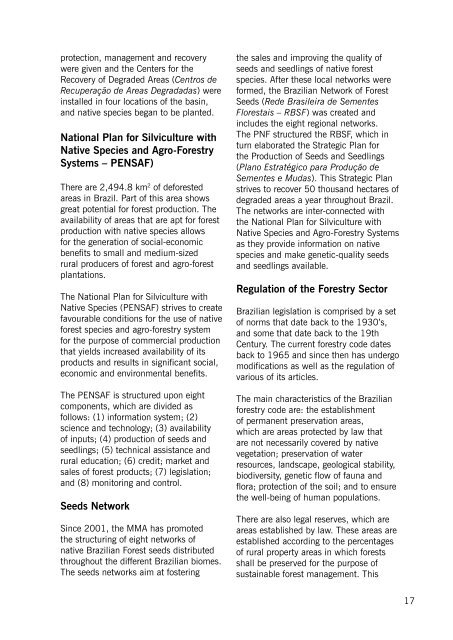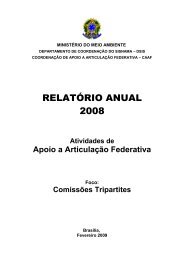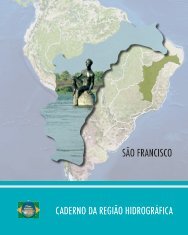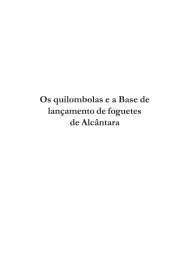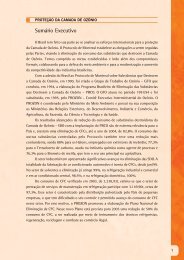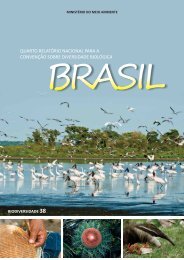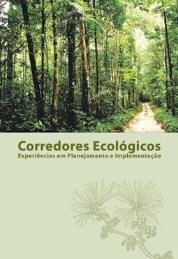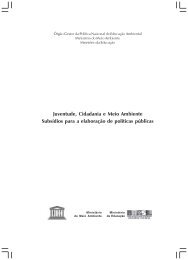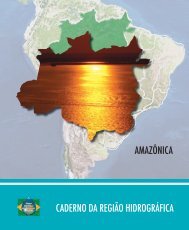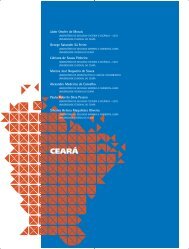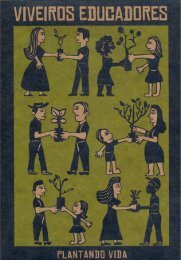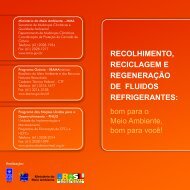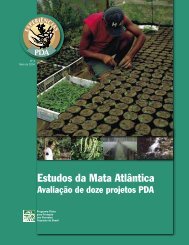Protected Areas
Protected Areas
Protected Areas
- No tags were found...
You also want an ePaper? Increase the reach of your titles
YUMPU automatically turns print PDFs into web optimized ePapers that Google loves.
protection, management and recoverywere given and the Centers for theRecovery of Degraded <strong>Areas</strong> (Centros deRecuperação de <strong>Areas</strong> Degradadas) wereinstalled in four locations of the basin,and native species began to be planted.National Plan for Silviculture withNative Species and Agro-ForestrySystems – PENSAF)There are 2,494.8 km 2 of deforestedareas in Brazil. Part of this area showsgreat potential for forest production. Theavailability of areas that are apt for forestproduction with native species allowsfor the generation of social-economicbenefits to small and medium-sizedrural producers of forest and agro-forestplantations.The National Plan for Silviculture withNative Species (PENSAF) strives to createfavourable conditions for the use of nativeforest species and agro-forestry systemfor the purpose of commercial productionthat yields increased availability of itsproducts and results in significant social,economic and environmental benefits.The PENSAF is structured upon eightcomponents, which are divided asfollows: (1) information system; (2)science and technology; (3) availabilityof inputs; (4) production of seeds andseedlings; (5) technical assistance andrural education; (6) credit; market andsales of forest products; (7) legislation;and (8) monitoring and control.Seeds NetworkSince 2001, the MMA has promotedthe structuring of eight networks ofnative Brazilian Forest seeds distributedthroughout the different Brazilian biomes.The seeds networks aim at fosteringthe sales and improving the quality ofseeds and seedlings of native forestspecies. After these local networks wereformed, the Brazilian Network of ForestSeeds (Rede Brasileira de SementesFlorestais – RBSF) was created andincludes the eight regional networks.The PNF structured the RBSF, which inturn elaborated the Strategic Plan forthe Production of Seeds and Seedlings(Plano Estratégico para Produção deSementes e Mudas). This Strategic Planstrives to recover 50 thousand hectares ofdegraded areas a year throughout Brazil.The networks are inter-connected withthe National Plan for Silviculture withNative Species and Agro-Forestry Systemsas they provide information on nativespecies and make genetic-quality seedsand seedlings available.Regulation of the Forestry SectorBrazilian legislation is comprised by a setof norms that date back to the 1930’s,and some that date back to the 19thCentury. The current forestry code datesback to 1965 and since then has undergomodifications as well as the regulation ofvarious of its articles.The main characteristics of the Brazilianforestry code are: the establishmentof permanent preservation areas,which are areas protected by law thatare not necessarily covered by nativevegetation; preservation of waterresources, landscape, geological stability,biodiversity, genetic flow of fauna andflora; protection of the soil; and to ensurethe well-being of human populations.There are also legal reserves, which areareas established by law. These areas areestablished according to the percentagesof rural property areas in which forestsshall be preserved for the purpose ofsustainable forest management. This17


